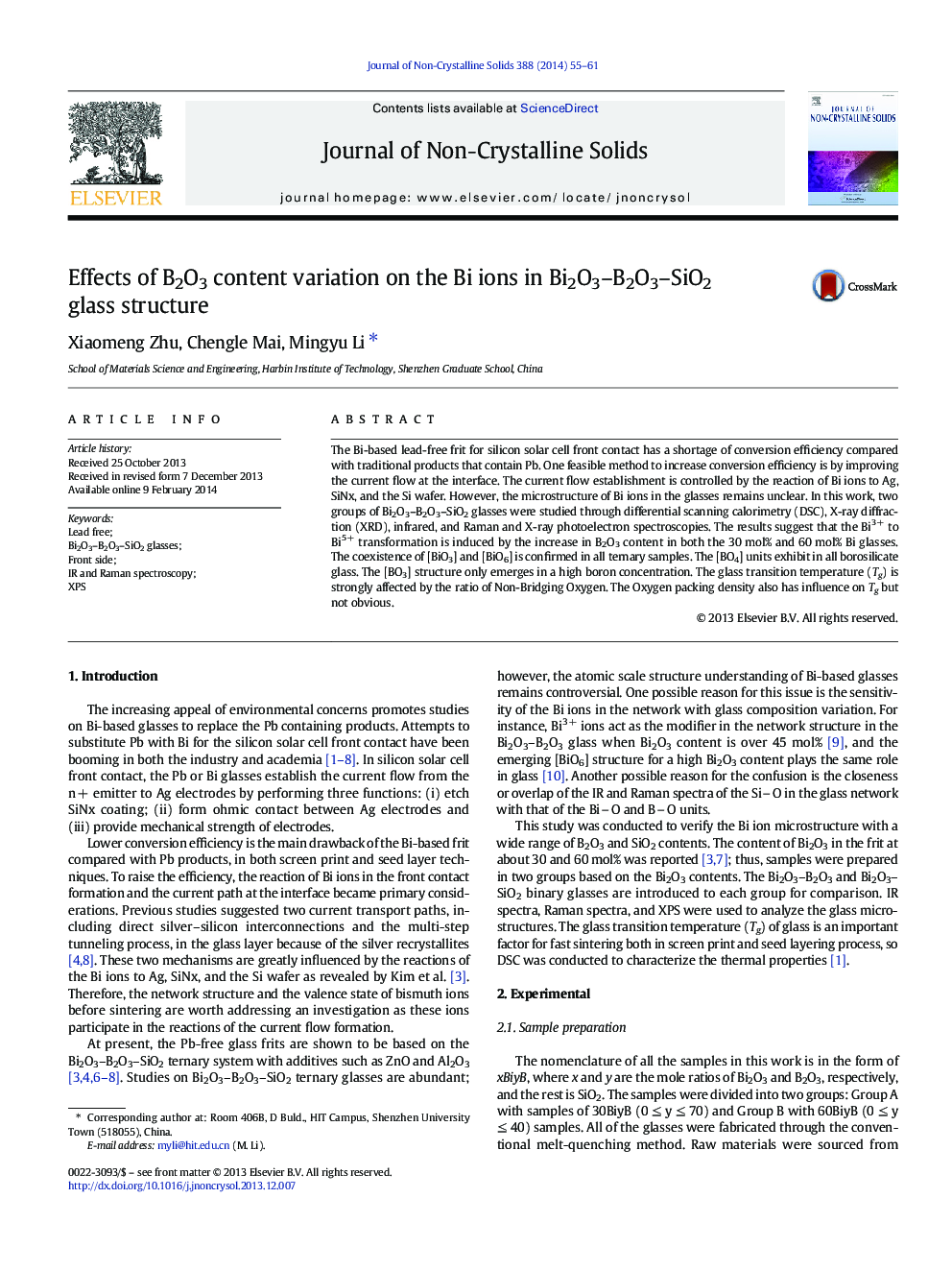| Article ID | Journal | Published Year | Pages | File Type |
|---|---|---|---|---|
| 1481082 | Journal of Non-Crystalline Solids | 2014 | 7 Pages |
•The B content increase results in Bi3 + to Bi5 + conversion rise up the Non-Bridging Oxygen.•The Tg is mainly affected by the Non-Bridging Oxygen.•The coexistence of [BiO3] and [BiO6] is confirmed in Bi2O3–B2O3–SiO2 system.•[BO3] only appeared in high B content samples.
The Bi-based lead-free frit for silicon solar cell front contact has a shortage of conversion efficiency compared with traditional products that contain Pb. One feasible method to increase conversion efficiency is by improving the current flow at the interface. The current flow establishment is controlled by the reaction of Bi ions to Ag, SiNx, and the Si wafer. However, the microstructure of Bi ions in the glasses remains unclear. In this work, two groups of Bi2O3–B2O3–SiO2 glasses were studied through differential scanning calorimetry (DSC), X-ray diffraction (XRD), infrared, and Raman and X-ray photoelectron spectroscopies. The results suggest that the Bi3 + to Bi5 + transformation is induced by the increase in B2O3 content in both the 30 mol% and 60 mol% Bi glasses. The coexistence of [BiO3] and [BiO6] is confirmed in all ternary samples. The [BO4] units exhibit in all borosilicate glass. The [BO3] structure only emerges in a high boron concentration. The glass transition temperature (Tg) is strongly affected by the ratio of Non-Bridging Oxygen. The Oxygen packing density also has influence on Tg but not obvious.
